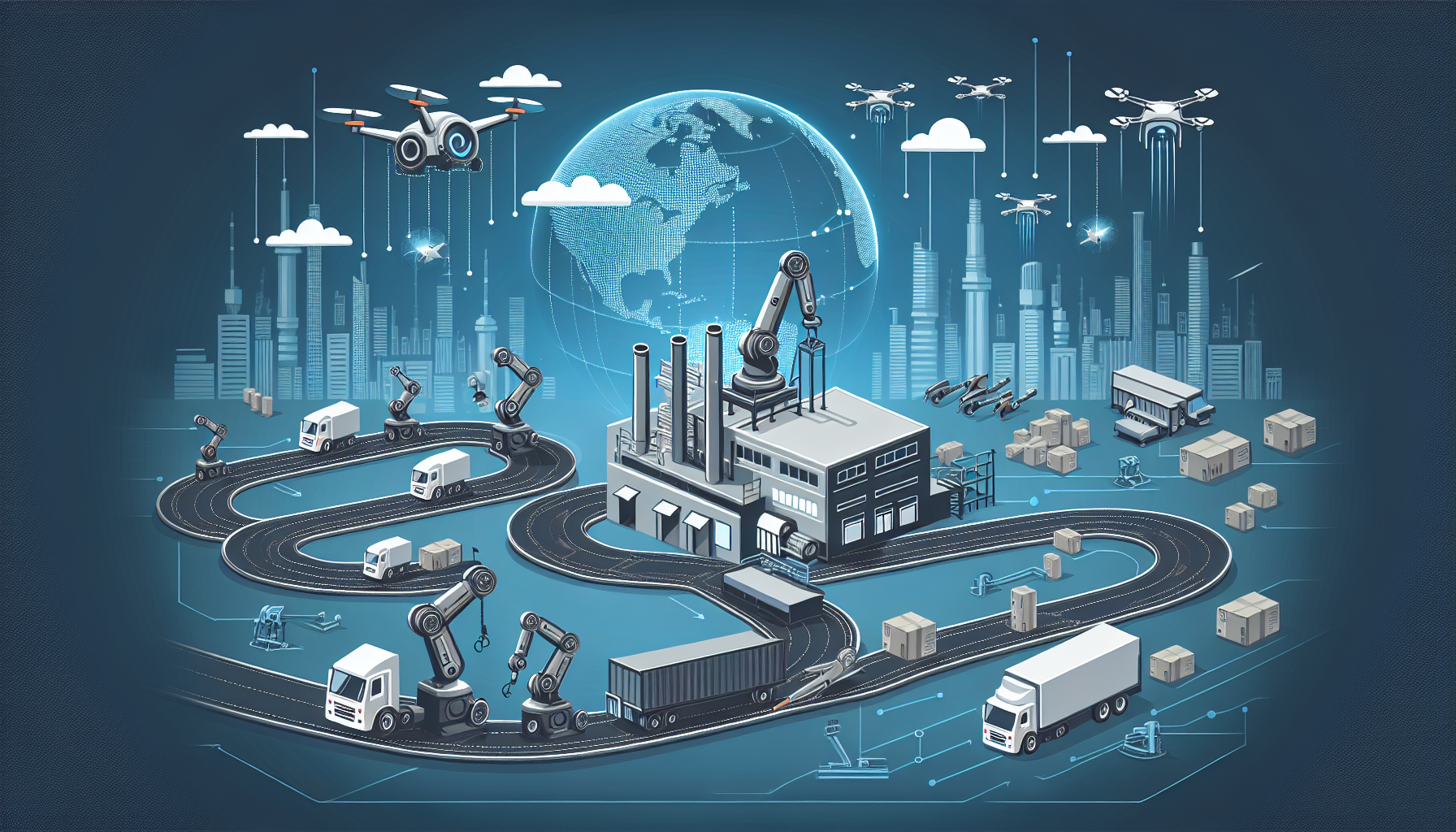Automation in Supply Chain Management: Boosting Efficiency from Production to Delivery
Understanding Supply Chain Management
Supply chain management (SCM) is an essential facet of business operations that involves overseeing the flow of goods and services from raw materials to end customers. It encompasses various stages, including production, inventory management, transportation, and delivery. In a hyper-competitive market landscape, companies are increasingly adopting automation technologies to refine these processes, optimize resource allocation, and enhance overall efficiency.
The Role of Automation in SCM
Automation refers to the use of technology to perform tasks with minimal or no human intervention. In the context of supply chain management, automation technologies streamline and optimize various parts of the supply chain. These can range from robotic process automation (RPA) to advanced manufacturing systems, automated warehousing, and sophisticated inventory management solutions. By harnessing these tools, businesses can reduce manual tasks, minimize errors, and accelerate response times.
Benefits of Automation
-
Increased Efficiency: Automation systems can execute repetitive tasks faster and more accurately than human workers, which significantly boosts productivity. For instance, automated order processing can reduce the time taken from order placement to fulfillment, thus improving overall lead times.
-
Cost Reduction: Implementing automation can lower operational costs. For example, automated inventory management systems can help businesses minimize excess stock and reduce holding costs. Furthermore, robots in warehouses can handle multiple tasks simultaneously, reducing labor costs.
-
Enhanced Accuracy: Automated systems minimize human error, thus improving the accuracy of inventory and order management. With barcoding, RFID tags, and real-time data collection, businesses can achieve high-level precision in tracking and forecasting.
-
Improved Scalability: Automation allows businesses to scale their operations smoothly. For example, during peak seasons, automated systems can manage increased order volumes without the need for additional human resources, thus aiding in flexible and scalable supply chain processes.
-
Better Customer Service: A streamlined supply chain, powered by automation, leads to quicker order fulfillment times and accurate deliveries. Enhanced customer satisfaction results directly from improved efficiency, giving businesses a competitive edge.
Types of Automation in Supply Chain Management
-
Warehouse Automation: Automated storage and retrieval systems (AS/RS), conveyor systems, and robotics are increasingly common in warehouses. These solutions improve inventory management and order accuracy, enabling quicker and more efficient picking processes.
-
Transportation Management Systems (TMS): Automation in transportation includes route optimization software and GPS tracking systems. These technologies facilitate real-time updates and data-driven decision-making, which can streamline logistics operations and enhance visibility across the supply chain.
-
Inventory Management: Automated inventory systems monitor stock levels and automatically reorder items when they fall below predetermined thresholds. This agility prevents stockouts and minimizes delays in the production or delivery process.
-
Robotic Process Automation (RPA): RPA can be employed for tasks such as order processing, invoicing, and data entry. By automating these routine tasks, SCM professionals can focus on strategy and innovation rather than being bogged down by administrative duties.
-
Demand Forecasting Tools: AI-driven analytics tools analyze historical data and market trends to predict future demand. Accurate forecasting is crucial for managing production schedules, inventory levels, and customer expectations.
Challenges in Implementing Automation
Despite the numerous benefits, businesses may encounter challenges when integrating automation into supply chain management:
-
High Initial Costs: The upfront investment for automation technologies can be substantial. Companies must evaluate potential ROI carefully before making significant investments.
-
Resistance to Change: Employees may resist adopting new technologies due to fear of job loss or unfamiliarity with advanced systems. Change management initiatives are essential to ease this transition and encourage employee buy-in.
-
Integration with Existing Systems: Legacy systems may complicate the integration of new automated solutions, necessitating significant adjustments or complete overhauls to current infrastructure.
-
Data Security Concerns: With increased automation comes the responsibility of safeguarding sensitive data. Flawed data security measures can lead to breaches that compromise supply chain integrity.
Future Trends in Supply Chain Automation
As technology advances, several trends are shaping the future of supply chain automation:
-
Artificial Intelligence (AI) and Machine Learning (ML): AI and ML will play a significant role in predictive analytics, enabling smarter decision-making and enhancing demand forecasting capabilities. Intelligent algorithms will continuously refine their predictions based on real-time data and trends.
-
Internet of Things (IoT): IoT devices will provide real-time visibility into supply chain operations. Connected sensors will offer insights into equipment performance and inventory status, allowing for proactive management.
-
Blockchain Technology: Implementing blockchain can enhance traceability and transparency across the supply chain. It provides an immutable record of transactions, which can be pivotal in verifying the authenticity of goods and reducing fraud.
-
Last-Mile Delivery Innovations: Automation will transform last-mile delivery, using drones and autonomous vehicles to reduce costs and improve delivery speed. Such advancements will address the growing demand for faster shipping options.
-
Sustainability Automation: Automation technologies are also making supply chains more sustainable. Energy-efficient equipment, smart routing to minimize carbon footprints, and automated systems that enhance recycling and waste management are becoming standard.
Key Takeaways for Businesses
For organizations looking to improve their supply chain operations through automation, it is vital to have a clear strategy:
-
Assess Needs and Opportunities: Conduct a thorough analysis of your current supply chain processes to identify areas where automation can yield significant benefits.
-
Invest in Training: Equip employees with the necessary skills to use automated tools and understand their value. This step is crucial for fostering a culture of innovation.
-
Start Small and Scale Up: Begin with pilot projects in manageable segments before broadening automation efforts across the supply chain. This allows businesses to assess performance and make adjustments as necessary.
-
Seek Expert Consultation: Engage with SCM consultants or technology providers to understand best practices for automation integration tailored to specific business needs.
-
Monitor and Optimize Continuously: Post-implementation, continuously monitor the performance of automated systems. Utilize analytics to identify inefficiencies and areas for further improvement, ensuring that the supply chain remains agile and responsive.


